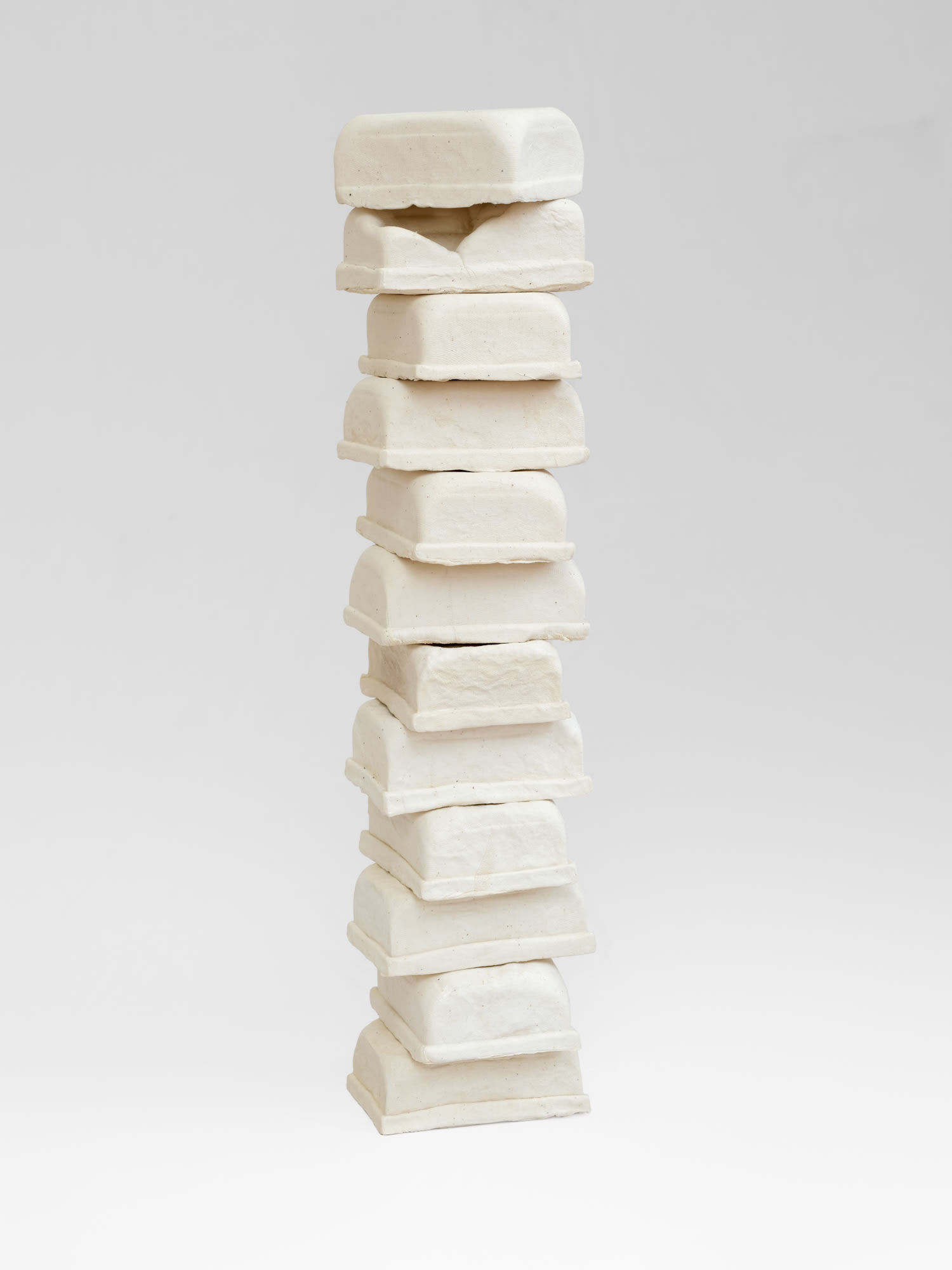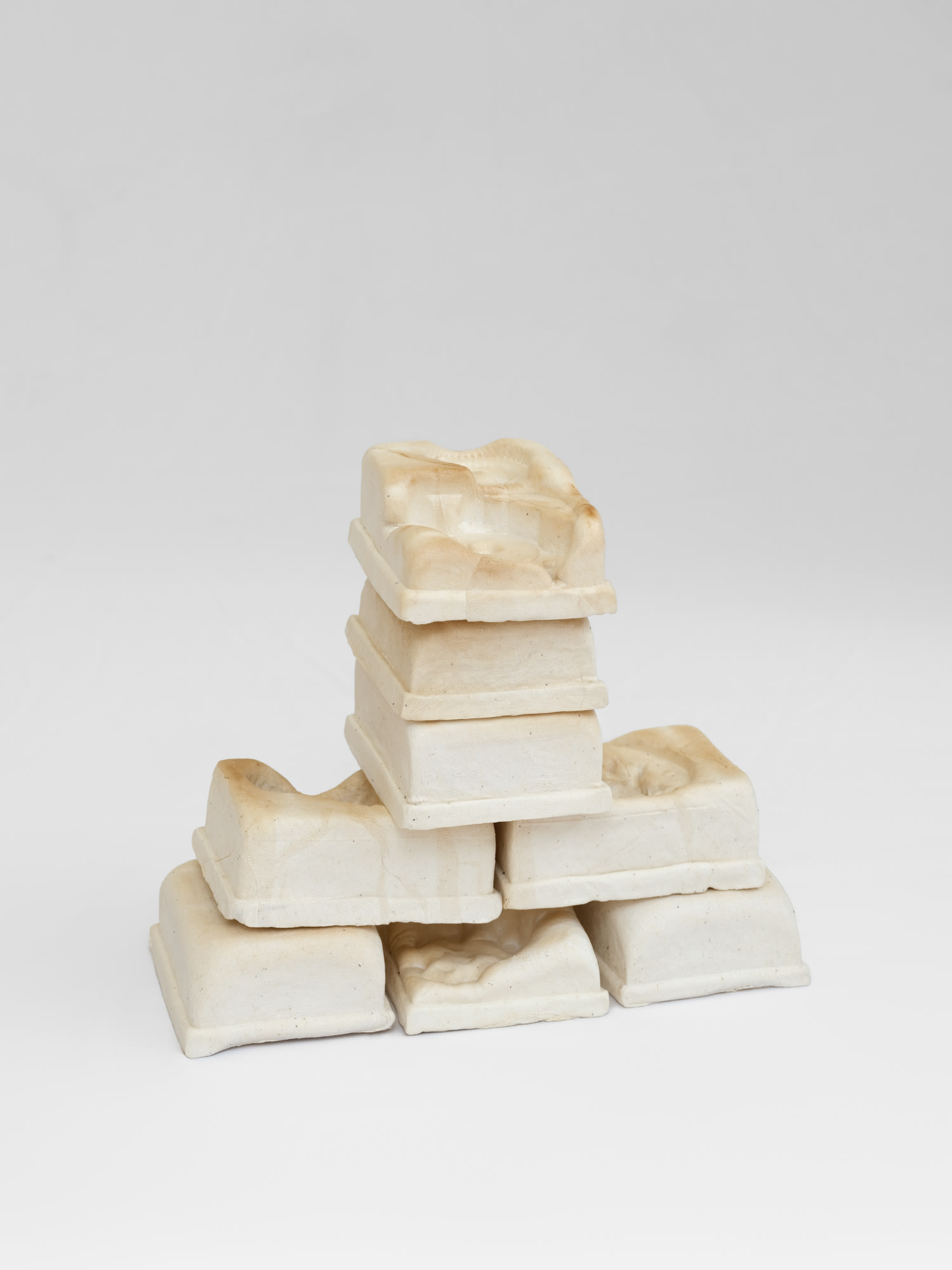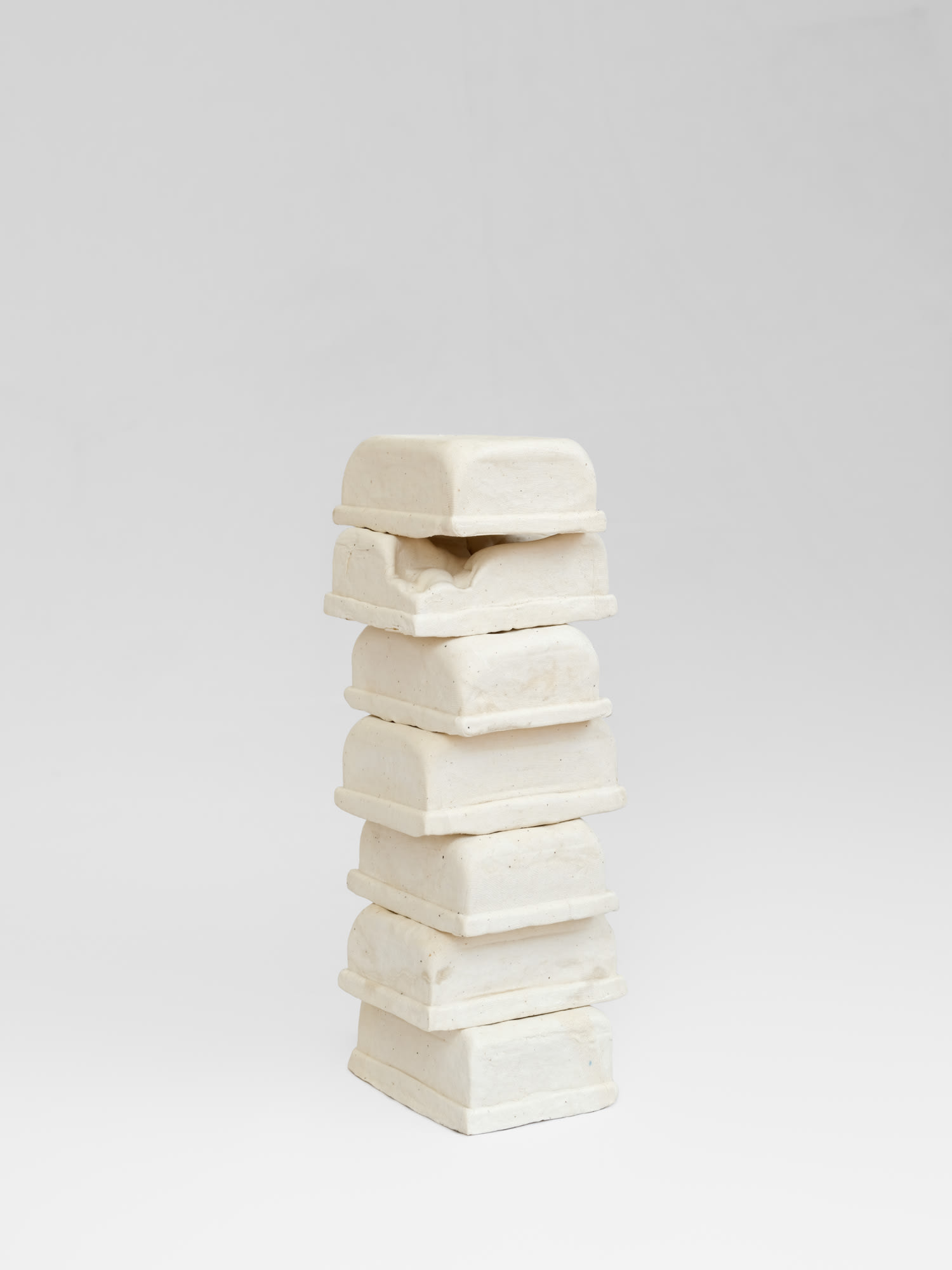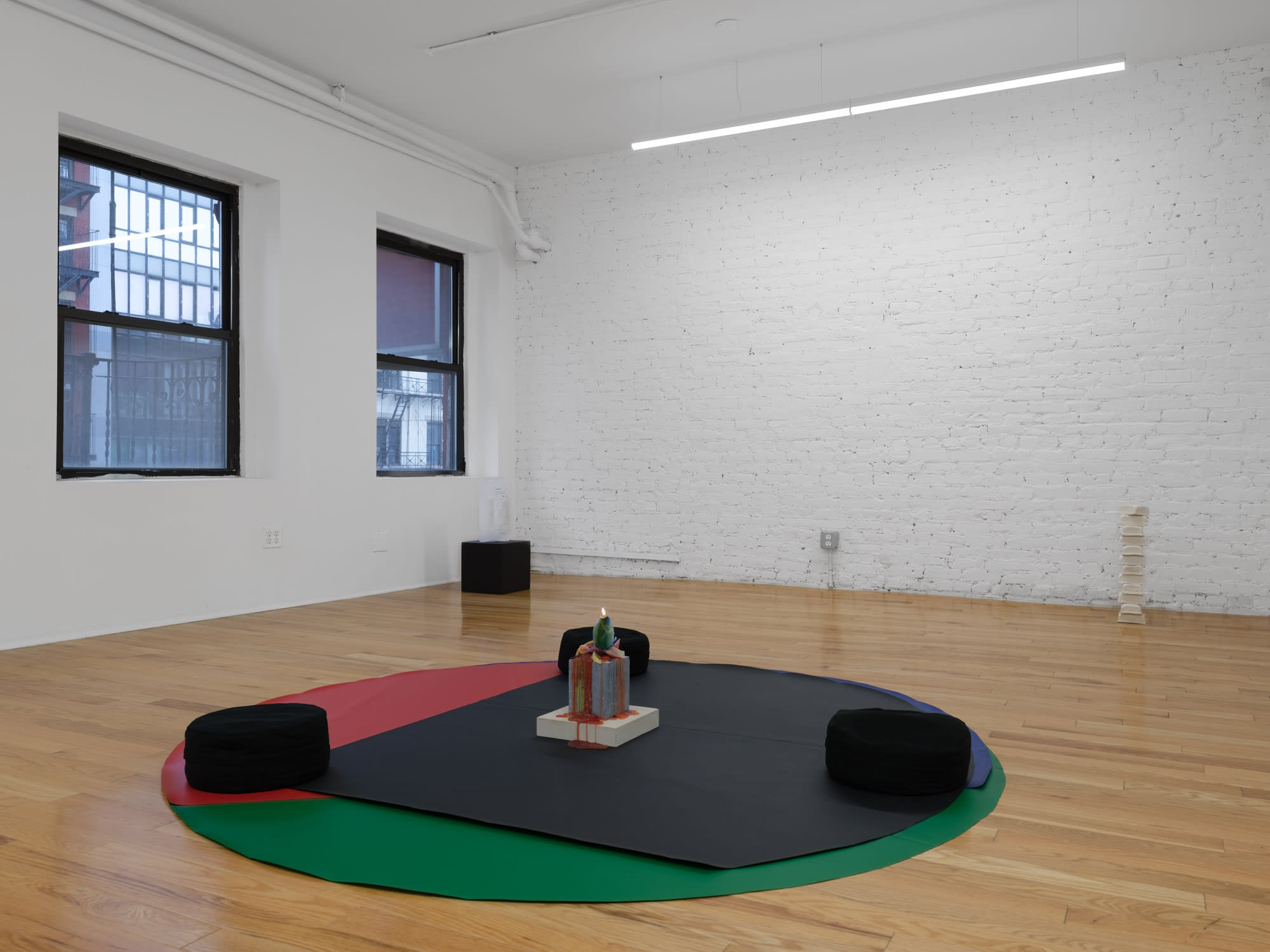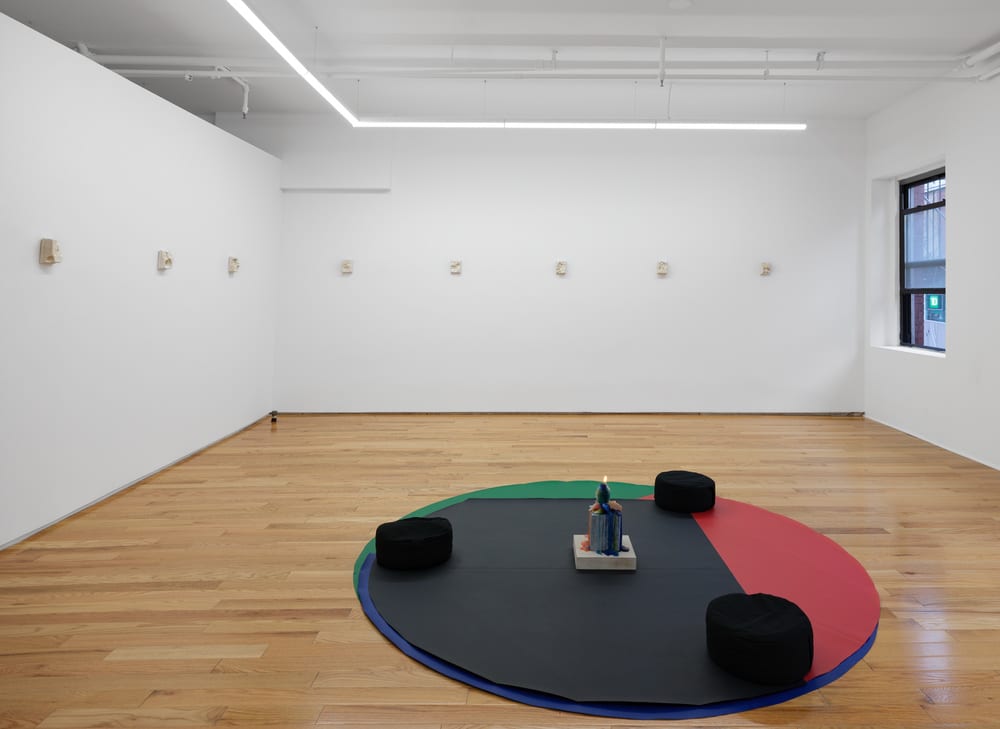Tofu Stratum, 2023
Papier-mâché, tofu cloth, and acrylic medium.
- Tofu Stratum I, 2023, 23 x 5 x 5 in
- Tofu Stratum V, 2023, 9.5 x 11.5 x 5 in
- Tofu Stratum II, 2023, 14 x 5 x 5 in
- Tofu Stratum III, 2023, 15 x 5 x 5 in
- Tofu Stratum IV, 2023, 17 x 8 x 5 in
- Tofu Stratum V, 2023, 9 x 8 x 5 in
Installation views
Exhibited
Inflaming Machines
island gallery
83 Bowery FL2, New York NY 10002
September 6 – October 7, 2023
https://island83.gallery/inflaming-machines
Inflaming Machines is Los Angeles and Kuala Lumpur-based artist Hings Lim’s (b. 1989) first solo show in New York. For this exhibition, Lim assembles recent bodies of work across expanded uses of participatory installation, sculpture, and live simulation. Drawing upon phantasmagoria and nonhuman presences via what the artist calls a “dilation” of everyday technical objects, Lim reimagines our changing socio-cultural relations to “technology”— ancient and imagined—and the performativity of such apparatuses via experiments in materiality. Lim offers the ghostly as a metaphor for in-betweenness in his practice: singular, monumental, and austere forms wax and wane, collapse, ignite and even burn away. The notion of “inflaming” further alludes to a shift towards ecological and environmental concerns in Lim’s practice; the detritus of machines, human consumption, to the burning of land, minerals, fuel, and time.
Stone-age tools and fire serve as technological departure points in Inflaming Machines. Visitors are welcomed by Flaming Tower: what appears to be a translucent stone set aflame atop an aluminum camera tripod is actually a candle cast from the mold of a biface, or hand ax—considered one of the oldest tools in history dating over 300,000 years ago found in caves across the world. These various multiples (cast from 3D replicas of actual flint artifacts in museum collections) recur throughout the show as reminders of the very first hand-held technologies which may have also struck together the first flames. Replaced throughout the duration of the exhibition as they melt, these prehistoric tools are reimagined as durational sculptures, gradually reduced to dripping deposits of multi-colored wax.
The exhibition also includes an arrangement of unlit bifaces grounded on a grooved layer of crating foam, typically used for museum, weaponry, and electric storage. Through the artist’s hand, these once museum artifacts are transformed back into simultaneously technological, functional, aesthetic, and even ritual objects. Visitors are free to pick up a candle (one at a time), light, and set it atop a limestone soapstone platform. Amidst the darkened gallery space and flickering shadows, three seats complete this triangulation of works as participants may devote time to sit with the piece. In an era of digital ocular-centricity and bright screens, we are reminded of the embodied uses of things. This playful mutability of forms for Lim is a contemplation of states of matter in various timescales: geological, human, machine, to decay.
Of the interactive installations in Inflaming Machines, the work Monolith (Polypod) explores the “poly” nature of technology through sound and the representation of machines as indefinite substances. A computer structure with a built-in audio receiver perches on multiple, intricate legs akin to those of a bronze-age Chinese food vessel, or ding 鼎. Every sound made in the space feeds into its antenna and registers into a real-time projection of a whirling cloudscape at dusk, from which a hovering, black monolithic structure emerges. Though rendered to angular perfection, it quivers, ripples, collapses, and disappears altogether in an uncanny dance when stimulated by noise: a body becomes a machine, a machine becomes a body.
The humorous resistance to the monolithic through interchangeable forms also manifests in Tofu Stratum, a new sculptural series of paper pulp cast into industrial-grade molds of tofu stacked atop one another into multiple towers. Some are imprinted with machine parts; negative indentations of gears populate these pieces like the fossilized remains of a rocky outcrop. Here, Lim dredges up childhood memories of growing up at a tofu factory in Malaysia, where cultural and familial expectations prompted one to be productive and instrumental, just like the machines that made the tofu. A cast rubber mold of a generic industrial motor sits on the gallery floor, its negative space also evocative of a biface. Akin to the other soft monuments in the exhibition, these stratums and machine parts serve as personal relics, modern ruins, time capsules, and towers that seem to be in a constant state of collapse. Taken together, Lim challenges the idea of an inevitable technological singularity that pulls us into the gravity of its all-consuming void. Inflaming Machines rekindles the historical roots of the technological continuum and imagines a fractured genealogy of machines.
– Text by Danni Shen
